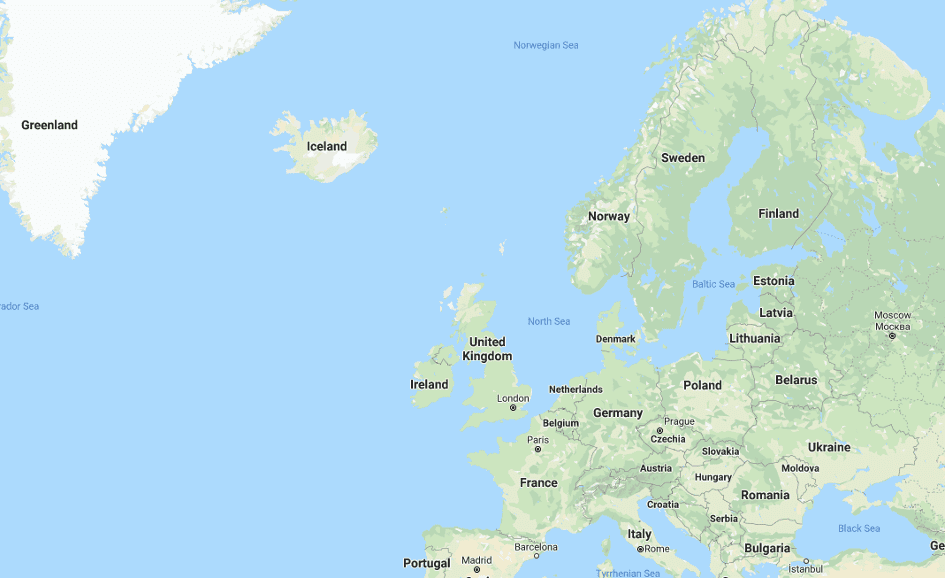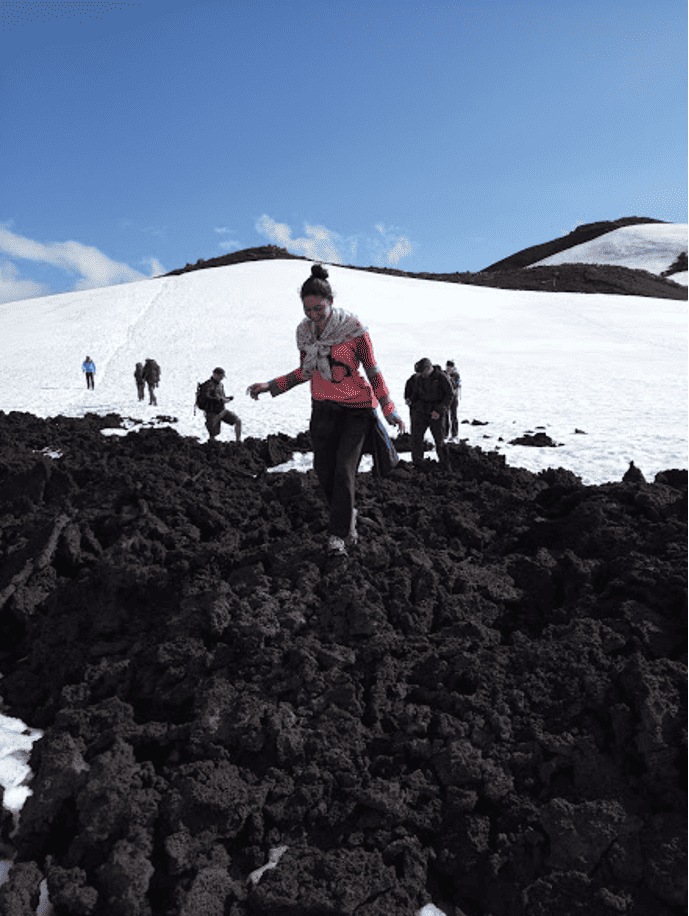General information
Location
Iceland is a small island, situated in the Nord Atlantic Ocean, close to Greenland. You can only travel to and from Iceland by aircraft or a boat. Because of its positioning, Iceland is known for its long winters and windy days. One of its misconceptions is that it’s too cold there, but due to the Gulf Stream, you will not turn into an ice cube while visiting.

History – Geology
Want to have some more information on the history and geology of Iceland? Go to our blogposts ‘The geology of the land of Fire and Ice’ and ‘History of Iceland’.
Currency – Conversion rates
The Icelandic currency is the Icelandic Krona. (put again conversion rate box)
How to drive & driving laws
Before hitting the road we would like to acquaint you with the rules and regulations about driving in Iceland. In addition, we will also give you some safety tips.
In Iceland, we have several car rental companies, but you can also bring your own car via ferry services.
Driving regulations:
• Drive on the right side of the road and overtake on the left
• General speed limit in populated areas is 30-50 km/hour, on gravel roads 80 km/hour and 90km/hour on paved roads
• Always wear your seatbelt
• Younger children and infants must be seated in car-safety seats
• Car headlights are switched on at all times, day or night
• Use of mobile phones behind the steering wheel is prohibited
• In Iceland there is a zero-tolerance, so do not drive after alcohol or drug consumption. If you get caught you will get a fine of at least 100.000 ISK and loss of driving privileges for 4 months
• On a two-lane roundabout, the inner lane has always priority over traffic on the outer lane
You can experience Iceland by using the Ring Road (Road 1). It connects all the beautiful places on the island. It has a total length of 1 339 km (832 miles) and is mostly paved and well maintained. Parts of Road 1 that are unpaved, can be found in the eastern part of the country (East Fjords).
Stay focused while driving. Whenever your attention gets drawn to magnificent scenery, please park your car in a safe spot. Don’t ever stand still/park your car on the road for taking a picture.
Some roads in the countryside can be rougher and narrower. Sometimes smaller bridges with single lanes appear while driving in the countryside. Be cautious of the opposite traffic when crossing these kinds of bridges. In addition, slow down when approaching a single-lane bridge or when the road changes from tarmac to gravel.
Going to the Highlands? A 4×4 is needed to venture the rough roads. Be extra cautious when crossing rivers or driving in the snow since it can be hazardous, especially when you are an inexperienced driver. Keep in mind that the Highland roads are only accessible during summertime. When travelling in the Highlands or other remote areas it is a good thing to download the ICE-SAR app (the Search and Rescue Association of Iceland). This is a safety app, using GPS technology that enables emergency services to trace your steps and locate you promptly in case of an emergency. It can save your life, so download it!
Off-road driving is illegal in Iceland! The reason, therefore, is that we want to keep our untouched and unique nature protected and preserve it for the next generations. If you get caught driving off-road, expect high fines and even imprisonment.
Driving in winter asks for specific tips that can be found in the FAQ blog.
Before starting your tour check the road information and conditions on Vegagerðin (vegagerdin.is),
Driving regulations Iceland
Driving in Iceland – Icelandair (video)
Driving in Iceland – Iceland24 (video)
Emergency number
The emergency number here in Iceland is 112 for all of the emergency services needed e.g. the police, the fire department, an ambulance and so on.
Physical condition (normal tours & for hikes)
In most of the trips offered on our website, you don’t have to be in a certain shape or a form to be able to join. The only element differentiating from that are the hikes, where a lot of physical activities will be expected. Hikes are not recommended for children under 8 years, seniors over 80 years or people with disabilities or mobility restrictions. You should also take into consideration if you are a fit for the hikes due to recent injuries or any other medical problems/conditions you have.

How to get the most out of the tours offered
A great way to get the most out of our tours is to be open-minded, take your time and do it at a pace you feel comfortable with, also ask if you don’t understand something or want to know more. We are more than happy to answer all of your questions. Furthermore, take a few pictures and try the activities offered or the food available to you.
Hot spots
Want to know all about Iceland’s hot spots and must-sees go to our FAQ blog.
Time difference
Iceland is on Greenwich time, the 0-line. The hours never change since Iceland does not have different winter and summer times.
Which airlines are operating
Airlines operating to and from Iceland (Keflavíkurflugvöllur) are:
• Icelandair
• Play
• Transavia
• Norwegian
• SAS
• Delta
• airBaltic
• Air Canada
• Air Greenland
• Atlantic airways
• Austrian
• British Airways
• Czech Airlines
• Easy Jet
• Edelweiss
• Eurowings
• Finnair
• Iberia express
• Jet2.com
• Lufthansa
• Neos
• United
• Vueling
• Wizz
Safety of the country
Iceland is the safest country globally for the 13th year in a row, according to the Global Peace Index. People in Iceland are usually very friendly and helpful. Additionally, the country is known for its low crime rate.
Land code
The land code here in Iceland is +354.
Public transport & walking distances
Iceland has a good bus system in Reykjavík but it doesn’t have a train system yet. You can take the bus to other regions of the country, such as Akureyri. Walking distances are typically short, since the cities and towns in Iceland are relatively small in comparison.
Paying by card
We take all visa and MasterCard cards for payment on our trips, the only thing we can’t take is American Express.
There is no need to activate your credit card at an ATM.

